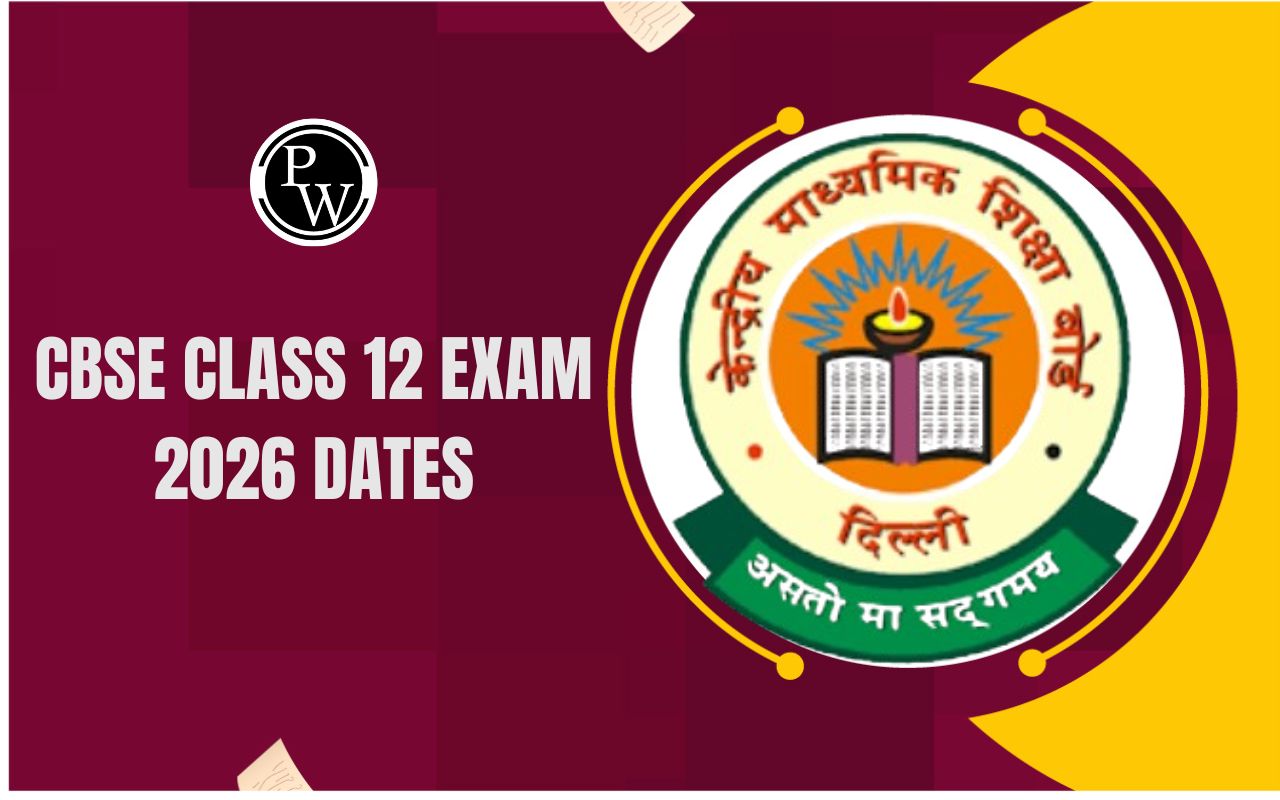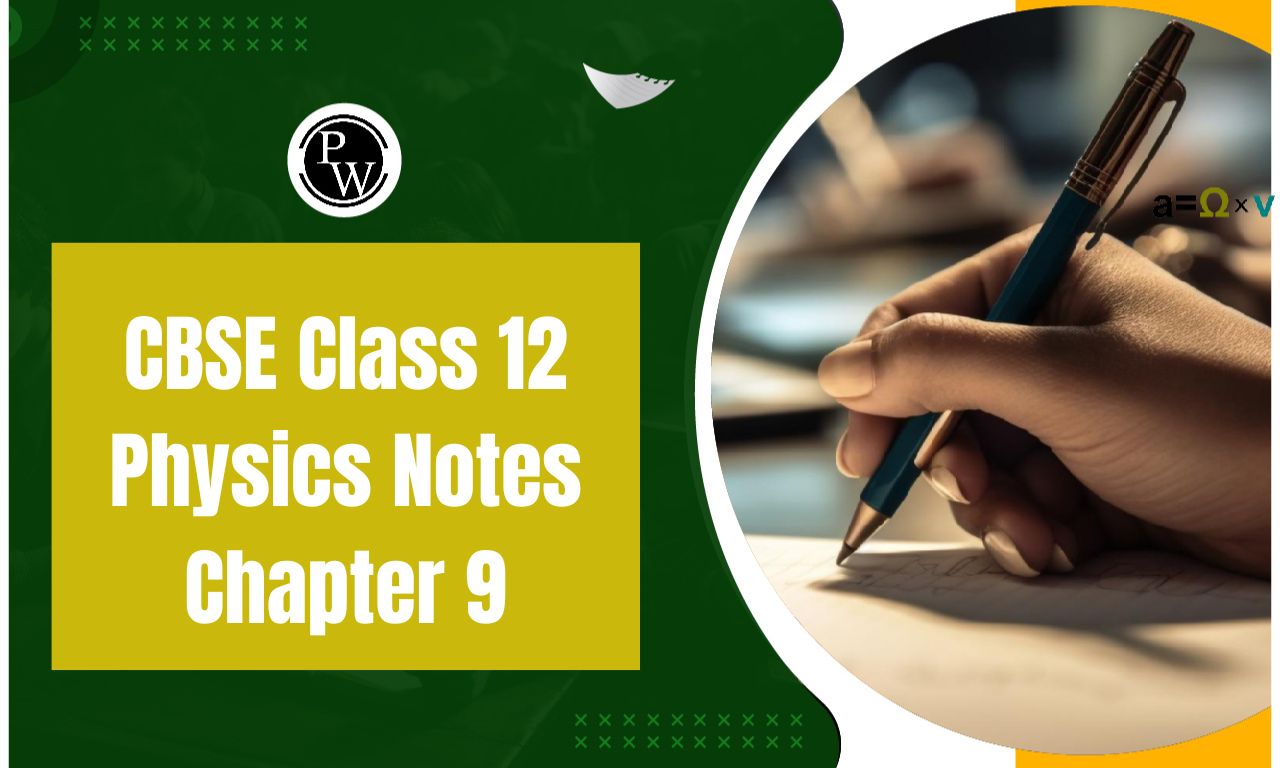
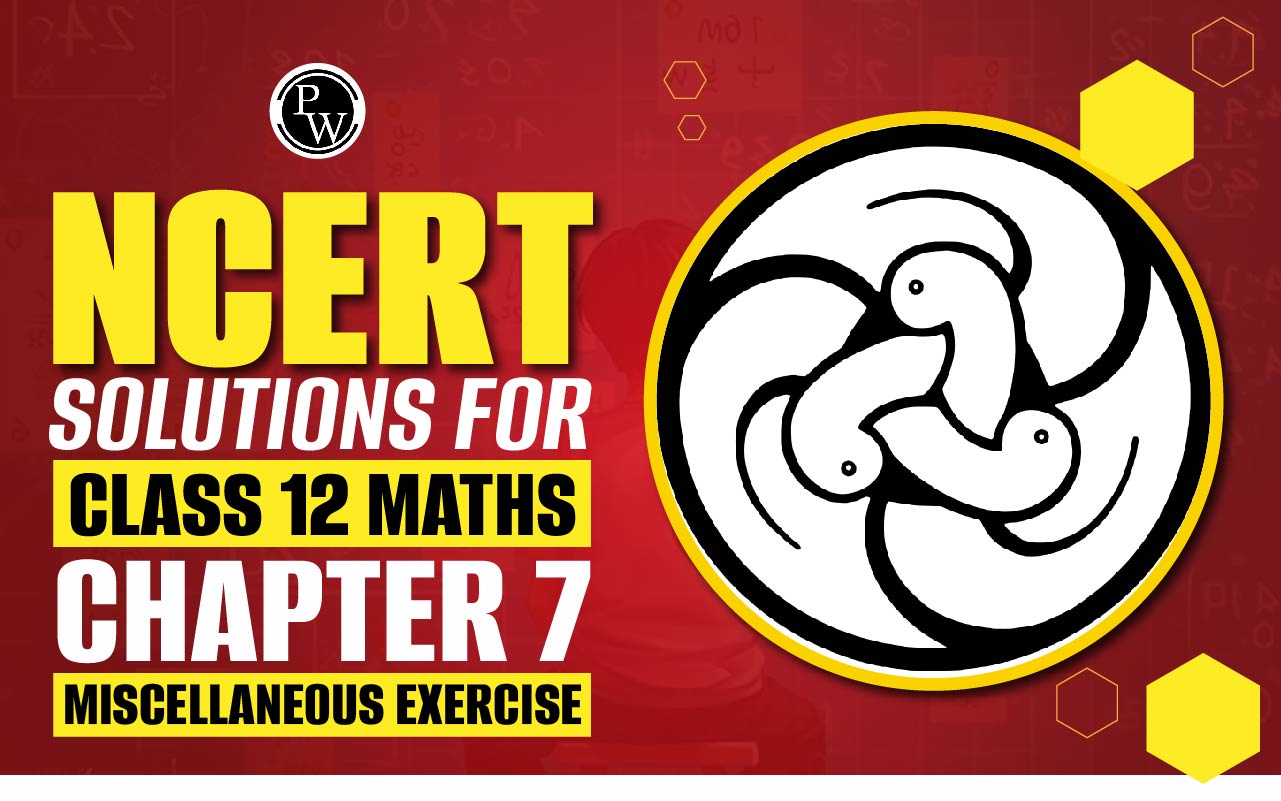
NCERT Solutions for Class 12 Maths Chapter 7 Miscellaneous Exercise (Integrals)
NCERT Solutions for Class 12 Maths Chapter 7 Miscellaneous Exercise Integrals is prepared by the academic team of Physics Wallah. We have prepared NCERT Solutions for all exercise of chapter-7. Given below is step by step solutions of all questions given in the NCERT Solutions for Class 12 Maths Chapter 7 Miscellaneous Exercise.NCERT Solutions for Class 12 Maths Chapter 7 Miscellaneous Exercise Integrals Overview
NCERT Solutions for Class 12 Maths Chapter 7 covers these important topics. Students are encouraged to review each topic thoroughly in order to fully understand the concepts taught in the chapter and make optimal use of the provided solutions. These solutions are the outcome of the dedicated effort that the Physics Wallah teachers have been doing to aid students in understanding the ideas covered in this chapter. After going over and rehearsing these responses, the goal is for students to easily score outstanding exam results.NCERT Solutions for Class 12 Maths Chapter 7 Miscellaneous Exercise
Solve The Following Questions NCERT Solutions for Class 12 Maths Chapter 7 Miscellaneous Exercise: Integrate the function in Exercises 1 to 11. Question 1. Solution :
Solution :
.png) Question
2.
Question
2.
 Solution :
Solution :
.png) Question
3.
Question
3.
.png) Solution :
Solution :
.png) Taking
θ
as first function and sec
2
θ
as second function and integrating by parts, we obtain
Taking
θ
as first function and sec
2
θ
as second function and integrating by parts, we obtain
.png) Question
4.
Question
4.
 Solution :
Solution :
.png) Question
5.
Question
5.
 Solution :
Solution :
.png) Question
6.
Question
6.
 Solution :
Solution :
.png)
.png) Question
7.
Question
7.
.png) Solution :
Solution :
.png) Question
8.
Question
8.
.png) Solution :
Solution :
.png) Question
9.
Question
9.
.png)
(A) 6
(B) 0
(C) 3
(D) 4
Solution :.png) Let cot
θ
=
t
⇒ −cosec2
θ
d
θ
=
dt
Let cot
θ
=
t
⇒ −cosec2
θ
d
θ
=
dt
.png) Question
10.
Question
10.

A. cos x + x sin x
B. x sin x
C. x cos x
D. sin x + x cos x
Solution : Let I =
 Question
11.
Question
11.
 Solution :
Solution :
 Integrate the function in Exercises 12 to 22.
Question
12.
Integrate the function in Exercises 12 to 22.
Question
12.
 Solution :
Solution :
 Question
13.
Question
13.
 Solution :
Solution :
 Question
14.
Question
14.
 Solution :
Solution :
 Question
15.
Question
15.
 Solution :
Let I =
Solution :
Let I =
 It can be seen that (
x
+ 2) ≤ 0 on [−5, −2] and (
x
+ 2) ≥ 0 on [−2, 5].
It can be seen that (
x
+ 2) ≤ 0 on [−5, −2] and (
x
+ 2) ≥ 0 on [−2, 5].
 Question
16.
Question
16.
 Solution :
Let I =
Solution :
Let I =
 It can be seen that (
x
− 5) ≤ 0 on [2, 5] and (
x
− 5) ≥ 0 on [5, 8].
It can be seen that (
x
− 5) ≤ 0 on [2, 5] and (
x
− 5) ≥ 0 on [5, 8].
 Question
17.
Question
17.
 Solution :
Solution :
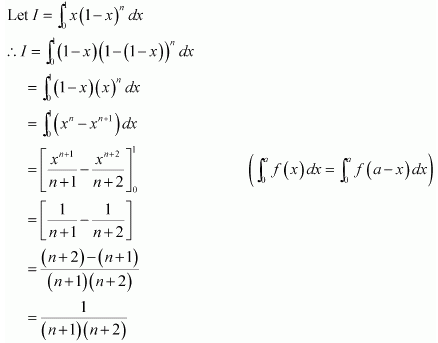 Question
18.
Question
18.
 Solution :
Solution :
 Question
19.
Question
19.
 Solution :
Solution :
 Question
20.
Question
20.
 Solution :
Solution :
 Question
21.
Question
21.
 Solution :
Let I =
Solution :
Let I =
 As sin
2
(−
x
) = (sin (−
x
))
2
= (−sin
x
)
2
= sin
2
x
, therefore, sin
2
x
is an even function.
As sin
2
(−
x
) = (sin (−
x
))
2
= (−sin
x
)
2
= sin
2
x
, therefore, sin
2
x
is an even function.
 Question
22.
Question
22.
 Solution :
Solution :
 Evaluate the integrals in Exercises 23 and 24.
Question
23.
Evaluate the integrals in Exercises 23 and 24.
Question
23.
 Solution :
Let I =
Solution :
Let I =
 As sin
7
(−
x
) = (sin (−
x
))
7
= (−sin
x
)
7
= −sin
7
x
, therefore, sin
2
x
is an odd function.
As sin
7
(−
x
) = (sin (−
x
))
7
= (−sin
x
)
7
= −sin
7
x
, therefore, sin
2
x
is an odd function.
 Question
24.
Question
24.
 Solution :
Solution :
 Evaluate the definite integrals in Exercise 25 to 33.
Question
25.
Evaluate the definite integrals in Exercise 25 to 33.
Question
25.
 Solution :
Solution :
 Question
26.
Question
26.
 Solution :
Solution :
 Adding (4) and (5), we obtain
Adding (4) and (5), we obtain
 Question
27.
Question
27.
 Solution :
Solution :
 Question
28.
Question
28.
 Solution :
Let I =
Solution :
Let I =
 It can be seen that, (
x
− 1) ≤ 0 when 0 ≤
x
≤ 1 and (
x
− 1) ≥ 0 when 1 ≤
x
≤ 4
It can be seen that, (
x
− 1) ≤ 0 when 0 ≤
x
≤ 1 and (
x
− 1) ≥ 0 when 1 ≤
x
≤ 4
 Question
29.Show that
Question
29.Show that
 if
f
and
g
are defined as f (x) = f(a - x) and g(x) + g(a - x) = 4
Solution :
if
f
and
g
are defined as f (x) = f(a - x) and g(x) + g(a - x) = 4
Solution :
 Question
30.
Question
30.

A. 0
B. 2
C. π
D. 1
Solution : = π
Question
31.
= π
Question
31.
 A.
2
B.
3/4
C.
0
D.
-2
Solution :
A.
2
B.
3/4
C.
0
D.
-2
Solution :
 Question
32.
Question
32.
 Solution :
Solution :
 From equation (1), we obtain
From equation (1), we obtain
 Question
33.
Question
33.
 Solution :
Solution :
 Prove the following (Exercise 34 to 40).
Question
34.
Prove the following (Exercise 34 to 40).
Question
34.
 [Hint: Put x = a/t]
Solution :
[Hint: Put x = a/t]
Solution :
 Question
35.
Question
35.
 Solution :
Let I =
Solution :
Let I =

 Question
36.
Question
36.
 Solution :
Solution :
 Question
37.
Question
37.
 Solution :
Solution :
 Question
38.
Question
38.
 Solution :
Solution :
 Question
39.
Question
39.
 Solution :
Solution :
 Question
40. Evaluate
Question
40. Evaluate
 as a limit of sum.
Solution :
Given:
as a limit of sum.
Solution :
Given:
 It is known that,
It is known that,

 Question
41. Choose the correct answer:
Question
41. Choose the correct answer:
 is equal to:
is equal to:
 Solution :
Solution :
 Therefore, option (A) is correct.
Question
42. Choose the correct answer:
Therefore, option (A) is correct.
Question
42. Choose the correct answer:
 is equal to:
(A)
is equal to:
(A)
 (B) log |sin x + cos x | + C
(C) log |sin x - cos x | + C
(D)
(B) log |sin x + cos x | + C
(C) log |sin x - cos x | + C
(D)
 Solution :
Solution :
 Therefore, option (B) is correct.
Question
43.
Choose the correct answers If f (a + b – x) = f (x), then
Therefore, option (B) is correct.
Question
43.
Choose the correct answers If f (a + b – x) = f (x), then

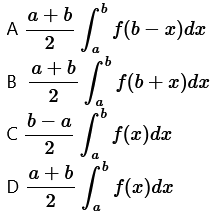 Solution :
Solution :
 Therefore, option (D) is correct.
Question
44. The value of
Therefore, option (D) is correct.
Question
44. The value of
 is:
(A) 1
(B) 0
(C) -1
(D) π/4
Solution :
is:
(A) 1
(B) 0
(C) -1
(D) π/4
Solution :
 Therefore, option (B) is correct.
Therefore, option (B) is correct.
Solve The Following Questions.
Integrate the function in Exercises 1 to 11. Question 1. Solution :
Solution :
.png) Question
2.
Question
2.
 Solution :
Solution :
.png) Question
3.
Question
3.
.png) Solution :
Solution :
.png) Taking
θ
as first function and sec
2
θ
as second function and integrating by parts, we obtain
Taking
θ
as first function and sec
2
θ
as second function and integrating by parts, we obtain
.png) Question
4.
Question
4.
 Solution :
Solution :
.png) Question
5.
Question
5.
 Solution :
Solution :
.png) Question
6.
Question
6.
 Solution :
Solution :
.png)
.png) Question
7.
Question
7.
.png) Solution :
Solution :
.png) Question
8.
Question
8.
.png) Solution :
Solution :
.png) Question
9.
Question
9.
.png)
(A) 6
(B) 0
(C) 3
(D) 4
Solution :.png) Let cot
θ
=
t
⇒ −cosec2
θ
d
θ
=
dt
Let cot
θ
=
t
⇒ −cosec2
θ
d
θ
=
dt
.png) Question
10.
Question
10.

A. cos x + x sin x
B. x sin x
C. x cos x
D. sin x + x cos x
Solution : Let I =
 Question
11.
Question
11.
 Solution :
Solution :
 Integrate the function in Exercises 12 to 22.
Question
12.
Integrate the function in Exercises 12 to 22.
Question
12.
 Solution :
Solution :
 Question
13.
Question
13.
 Solution :
Solution :
 Question
14.
Question
14.
 Solution :
Solution :
 Question
15.
Question
15.
 Solution :
Let I =
Solution :
Let I =
 It can be seen that (
x
+ 2) ≤ 0 on [−5, −2] and (
x
+ 2) ≥ 0 on [−2, 5].
It can be seen that (
x
+ 2) ≤ 0 on [−5, −2] and (
x
+ 2) ≥ 0 on [−2, 5].
 Question
16.
Question
16.
 Solution :
Let I =
Solution :
Let I =
 It can be seen that (
x
− 5) ≤ 0 on [2, 5] and (
x
− 5) ≥ 0 on [5, 8].
It can be seen that (
x
− 5) ≤ 0 on [2, 5] and (
x
− 5) ≥ 0 on [5, 8].
 Question
17.
Question
17.
 Solution :
Solution :
 Question
18.
Question
18.
 Solution :
Solution :
 Question
19.
Question
19.
 Solution :
Solution :
 Question
20.
Question
20.
 Solution :
Solution :
 Question
21.
Question
21.
 Solution :
Let I =
Solution :
Let I =
 As sin
2
(−
x
) = (sin (−
x
))
2
= (−sin
x
)
2
= sin
2
x
, therefore, sin
2
x
is an even function.
As sin
2
(−
x
) = (sin (−
x
))
2
= (−sin
x
)
2
= sin
2
x
, therefore, sin
2
x
is an even function.
 Question
22.
Question
22.
 Solution :
Solution :
 Evaluate the integrals in Exercises 23 and 24.
Question
23.
Evaluate the integrals in Exercises 23 and 24.
Question
23.
 Solution :
Let I =
Solution :
Let I =
 As sin
7
(−
x
) = (sin (−
x
))
7
= (−sin
x
)
7
= −sin
7
x
, therefore, sin
2
x
is an odd function.
As sin
7
(−
x
) = (sin (−
x
))
7
= (−sin
x
)
7
= −sin
7
x
, therefore, sin
2
x
is an odd function.
 Question
24.
Question
24.
 Solution :
Solution :
 Evaluate the definite integrals in Exercise 25 to 33.
Question
25.
Evaluate the definite integrals in Exercise 25 to 33.
Question
25.
 Solution :
Solution :
 Question
26.
Question
26.
 Solution :
Solution :
 Adding (4) and (5), we obtain
Adding (4) and (5), we obtain
 Question
27.
Question
27.
 Solution :
Solution :
 Question
28.
Question
28.
 Solution :
Let I =
Solution :
Let I =
 It can be seen that, (
x
− 1) ≤ 0 when 0 ≤
x
≤ 1 and (
x
− 1) ≥ 0 when 1 ≤
x
≤ 4
It can be seen that, (
x
− 1) ≤ 0 when 0 ≤
x
≤ 1 and (
x
− 1) ≥ 0 when 1 ≤
x
≤ 4
 Question
29.Show that
Question
29.Show that
 if
f
and
g
are defined as f (x) = f(a - x) and g(x) + g(a - x) = 4
Solution :
if
f
and
g
are defined as f (x) = f(a - x) and g(x) + g(a - x) = 4
Solution :
 Question
30.
Question
30.

A. 0
B. 2
C. π
D. 1
Solution : = π
Question
31.
= π
Question
31.
 A.
2
B.
3/4
C.
0
D.
-2
Solution :
A.
2
B.
3/4
C.
0
D.
-2
Solution :
 Question
32.
Question
32.
 Solution :
Solution :
 From equation (1), we obtain
From equation (1), we obtain
 Question
33.
Question
33.
 Solution :
Solution :
 Prove the following (Exercise 34 to 40).
Question
34.
Prove the following (Exercise 34 to 40).
Question
34.
 [Hint: Put x = a/t]
Solution :
[Hint: Put x = a/t]
Solution :
 Question
35.
Question
35.
 Solution :
Let I =
Solution :
Let I =

 Question
36.
Question
36.
 Solution :
Solution :
 Question
37.
Question
37.
 Solution :
Solution :
 Question
38.
Question
38.
 Solution :
Solution :
 Question
39.
Question
39.
 Solution :
Solution :
 Question
40. Evaluate
Question
40. Evaluate
 as a limit of sum.
Solution :
Given:
as a limit of sum.
Solution :
Given:
 It is known that,
It is known that,

 Question
41. Choose the correct answer:
Question
41. Choose the correct answer:
 is equal to:
is equal to:
 Solution :
Solution :
 Therefore, option (A) is correct.
Question
42. Choose the correct answer:
Therefore, option (A) is correct.
Question
42. Choose the correct answer:
 is equal to:
(A)
is equal to:
(A)
 (B) log |sin x + cos x | + C
(C) log |sin x - cos x | + C
(D)
(B) log |sin x + cos x | + C
(C) log |sin x - cos x | + C
(D)
 Solution :
Solution :
 Therefore, option (B) is correct.
Question
43.
Choose the correct answers If f (a + b – x) = f (x), then
Therefore, option (B) is correct.
Question
43.
Choose the correct answers If f (a + b – x) = f (x), then

 Solution :
Solution :
 Therefore, option (D) is correct.
Question
44. The value of
Therefore, option (D) is correct.
Question
44. The value of
 is:
(A) 1
(B) 0
(C) -1
(D) π/4
Solution :
is:
(A) 1
(B) 0
(C) -1
(D) π/4
Solution :
 Therefore, option (B) is correct.
Therefore, option (B) is correct.
NCERT Solutions for Class 12 Maths Chapter 7 FAQs
What is Chapter 7 of Class 12 Maths about?
Chapter 7 of Class 12 Maths is titled "Integration." It covers the concept of definite and indefinite integrals, properties of integrals, and various techniques of integration.
What is the Miscellaneous Exercise in Chapter 7 about?
The Miscellaneous Exercise in Chapter 7 includes additional problems related to integrals, providing students with more practice and a diverse range of questions.
Why is it important to study Integrals in Class 12 Maths?
Integrals are fundamental in calculus and are used to find the area under curves, solve problems related to accumulation of quantities, and many other applications in various fields.
How can NCERT Solutions for Chapter 7 Miscellaneous Exercise help students?
NCERT Solutions provide step-by-step explanations for each problem in the Miscellaneous Exercise. They help students understand the concepts, methods, and techniques used in solving a variety of integral problems.
Where can I find NCERT Solutions for Chapter 7 Miscellaneous Exercise?
NCERT Solutions for Class 12 Maths Chapter 7 Miscellaneous Exercise can be found in the official NCERT textbooks. Solutions may be available in various study materials, online educational platforms, or dedicated math solution books.
🔥 Trending Blogs
Talk to a counsellorHave doubts? Our support team will be happy to assist you!

Check out these Related Articles
Free Learning Resources
PW Books
Notes (Class 10-12)
PW Study Materials
Notes (Class 6-9)
Ncert Solutions
Govt Exams
Class 6th to 12th Online Courses
Govt Job Exams Courses
UPSC Coaching
Defence Exam Coaching
Gate Exam Coaching
Other Exams
Know about Physics Wallah
Physics Wallah is an Indian edtech platform that provides accessible & comprehensive learning experiences to students from Class 6th to postgraduate level. We also provide extensive NCERT solutions, sample paper, NEET, JEE Mains, BITSAT previous year papers & more such resources to students. Physics Wallah also caters to over 3.5 million registered students and over 78 lakh+ Youtube subscribers with 4.8 rating on its app.
We Stand Out because
We provide students with intensive courses with India’s qualified & experienced faculties & mentors. PW strives to make the learning experience comprehensive and accessible for students of all sections of society. We believe in empowering every single student who couldn't dream of a good career in engineering and medical field earlier.
Our Key Focus Areas
Physics Wallah's main focus is to make the learning experience as economical as possible for all students. With our affordable courses like Lakshya, Udaan and Arjuna and many others, we have been able to provide a platform for lakhs of aspirants. From providing Chemistry, Maths, Physics formula to giving e-books of eminent authors like RD Sharma, RS Aggarwal and Lakhmir Singh, PW focuses on every single student's need for preparation.
What Makes Us Different
Physics Wallah strives to develop a comprehensive pedagogical structure for students, where they get a state-of-the-art learning experience with study material and resources. Apart from catering students preparing for JEE Mains and NEET, PW also provides study material for each state board like Uttar Pradesh, Bihar, and others
Copyright © 2025 Physicswallah Limited All rights reserved.
Get App




